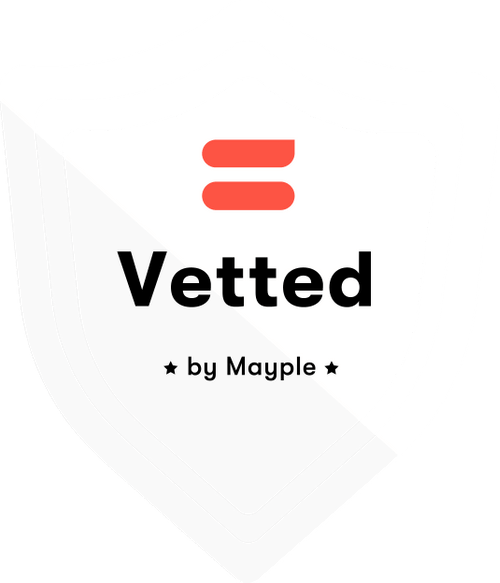Gaining new customers and retaining existing ones is the only way for a small business to survive. To do that, it needs to market itself.
Not all marketing strategies are created equally. Some cost a lot but don’t provide much of a return on investment (ROI). Others are more cost-effective, meaning they won’t break the bank and will lead to increased leads and conversions.
A personalized digital marketing strategy gets your brand in front of the right audience, allowing you to grow. Putting one or more digital marketing strategies into place can help your company reach its goals.
Understanding Your Audience
Rule one of marketing is to know your audience, meaning know who you’re trying to connect with. You don’t want to take the spaghetti approach to marketing, where you put your ads everywhere and hope the right person finds them. Instead, you want to carefully define your niche or target market and go where they go.
Creating buyer personas is one way to get to know your target customer a bit better. A buyer persona identifies who your customers are, what they want, what their problems are and where their priorities lie. You can have multiple buyer personas but should be careful to target your marketing to each one separately.
You can get the information you need to put together effective personas from your existing customers and through market research.
To get the most from your buyer personas, pair them with a potential customer’s lifecycle, or where they are in the marketing funnel, such as just learning about your company, evaluating your company or ready to buy.
From there, you can decide where to market your brand based on what you know about your audience. If you want to reach teenagers, you may head to TikTok. If your target audience is middle-aged moms, you’ll probably find them on Facebook.
Strengths of an Effective Content Strategy
How do you develop an effective content distribution strategy? It starts with knowing the strengths and elements of a content strategy.
Content takes many forms, from landing pages to blog posts and from videos to social media posts from influencers. Whatever form of content your brand prefers (it can use a mix), it needs to have a plan for maximizing that content’s reach and effectiveness.
Keyword research is the process of learning about the terms people use when they’re searching for information. Once you know what people are looking for, you can create content that’s relevant to their needs. An effective keyword strategy brings people to your brand.
Blogging is often part of a cost-effective digital marketing strategy, as it allows you to incorporate what you learned from keyword research into valuable content. If your brand doesn’t have the time or the budget to hire a content writer or blogger full-time, you can benefit from guest post outreach, connecting with established bloggers and having them create posts for your website or sponsored posts on their blogs.
When creating content or asking bloggers to create content for your brand, focus on the customer’s journey and where they are in the marketing funnel. Some posts should target customers early in the process when they are just gaining awareness of your brands.
Some should target customers in the middle of the funnel, as they start comparing brands and making their decisions. Finally, some content should target customers at the bottom of the funnel, the ones who are just about ready to buy.
Take Advantage of Your Social Media Reach
While plenty of people can find your content through a Google search (thanks to keyword research), social media is another effective way to reach an audience. How you get your message out through social media depends on the platforms you use and the audience you want to reach.
The audience on each platform differs slightly, so it’s important to go where your target audience goes. From there, you can measure the reach of your content, which is how many people see your content on a particular platform. You can also measure social media impressions and engagement.
What’s the difference between social media reach vs. engagement vs. impressions? A few things. Reach tracks the number of unique individuals who see your content, while impressions count how many times your content showed up in users’ feeds.
Social media engagement is the cream of the crop. It measures how many people interact with your content, whether by commenting on it, liking it, sharing it or clicking it.
Once you start sharing content on social platforms, you can gauge response by engagement. From there, you can determine which social networks work the best for your brand and which ones aren’t worth your time.
Other Mediums Small Businesses Can Visit
There are plenty of people online who are more than happy to partner with brands and help them get their message out to the target audience. Guest bloggers and influencers create content on behalf of brands and can be a cost-effective way to engage with your target audience or reach a new audience.
Influencers are individuals who have sway over a target audience. They’ve built up a following on social media and often partner with brands that produce products or services that are relevant to their audience. Bloggers are similar, although they typically connect with their audience through blog posts rather than social media.
There are several ways to reach out to influencers as a small business, to see if they’re interested in partnering with your brand. First, make sure the blogger or influencer specializes in a niche that’s relevant to your audience. You don’t want to connect with a fashion influencer if you make auto parts, for example.
Look at the influencer’s follower count and the level of engagement their posts get. Then, evaluate the quality of their posts and content to ensure it’s something you want to connect your brand with. From there, you can send a message or email to the influencer or connect with their agent to find out their rates and availability.
Differentiate Between Good & Bad Traffic
Like marketing strategies, not all traffic is created equally. You want people clicking through your links, but there’s more to it than that. If people click a link, then bounce right away, your business isn’t converting leads into customers.
You can use metrics to track how long people stay on your site and what they do after clicking a link. Then, you can tie that back to where they’re coming from and the content they’re looking at to determine what’s working and what could use some tweaking.
For example, your brand might work with a popular influencer, only to realize that the people that click through the influencer’s posts don’t convert. Meanwhile, a blog post on your site gets plenty of traffic from Google and social media and usually leads to sales. In that case, it’s worthwhile to focus on promoting the blog post.


